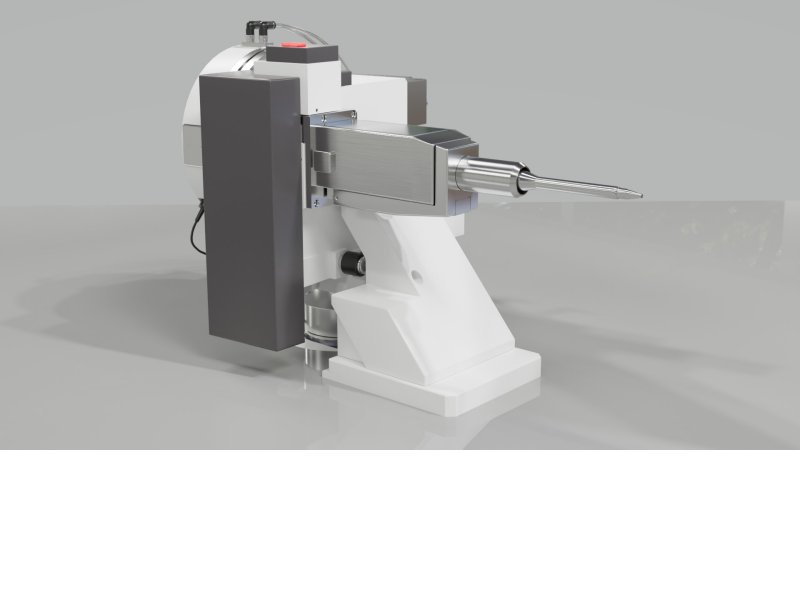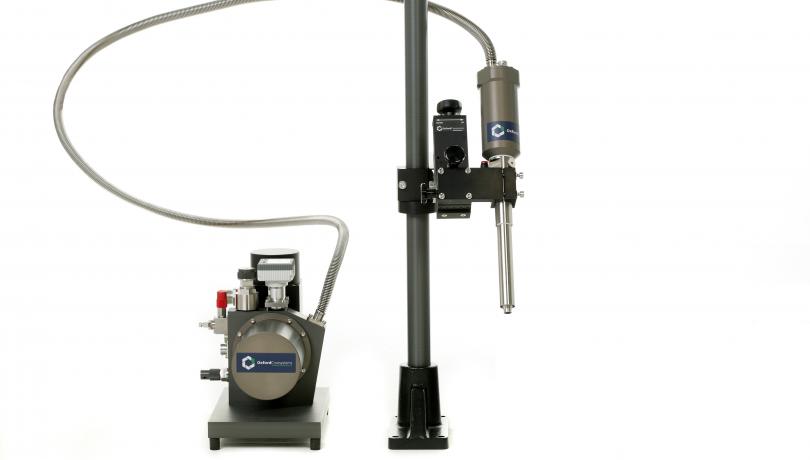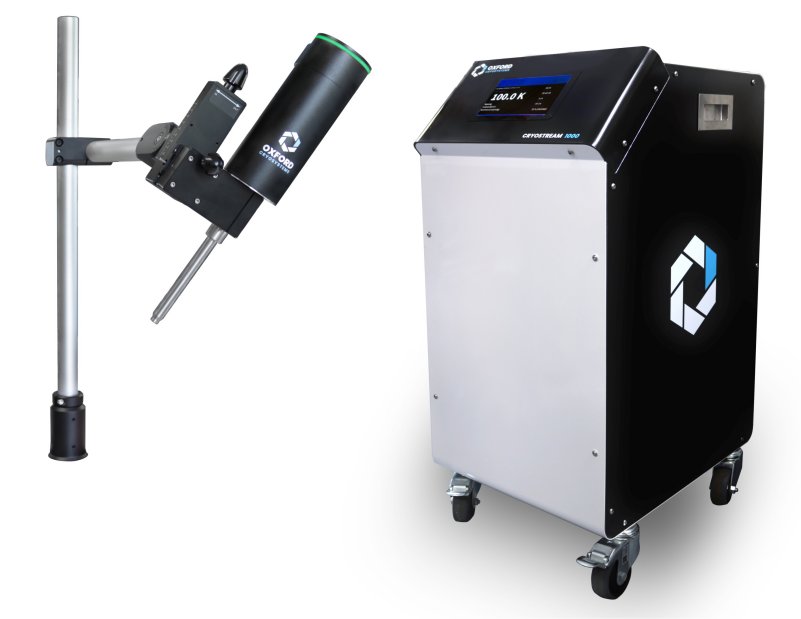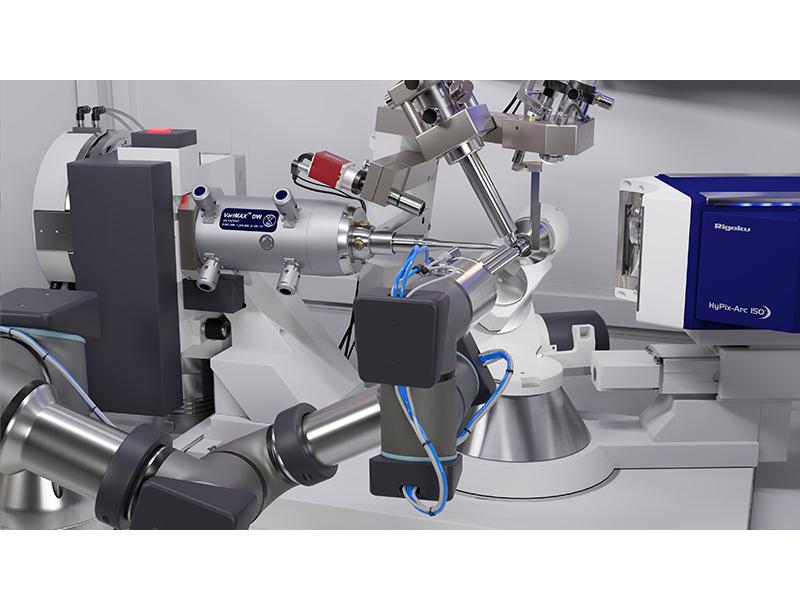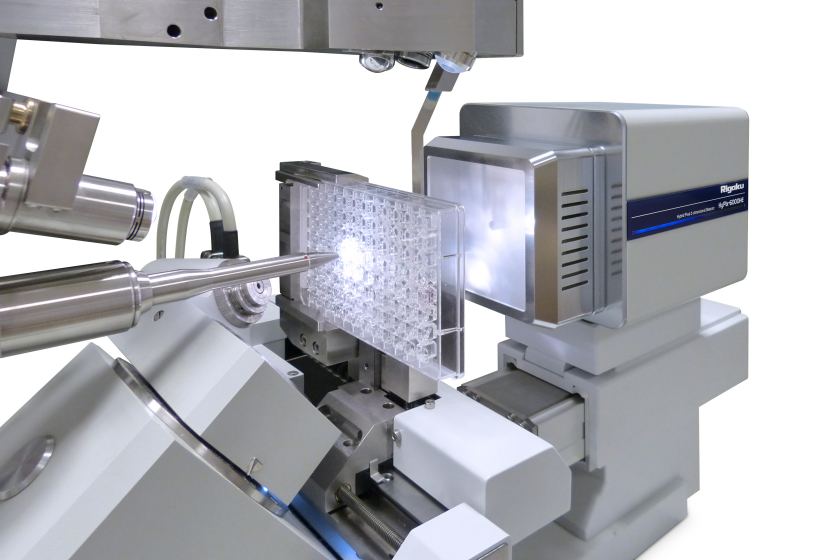XtaLAB Synergy-DW
Dual-Wavelength Rotating Anode X-ray Diffractometer with HPC X-ray Detector
The ultimate single crystal X-ray diffractometer for a wide range of crystallographic applications
The introduction in 2004 of the Oxford Diffraction Gemini diffractometer, with two independent X-ray sources, was a watershed moment in crystallographic instrumentation. The groundbreaking design of the Gemini suddenly gave crystallographers the ability to easily switch between Cu and Mo wavelengths and greatly expanded the experimental flexibility available for analyzing single crystal samples. The XtaLAB Synergy-DW is an evolution of that revolutionary idea which retains the flexibility of the dual wavelength capability but in addition adds the exceptional flux enhancement of a reliable, rotating anode X-ray source. It is the perfect diffractometer for a core facility where protein crystallography and small molecule crystallography are both practiced.

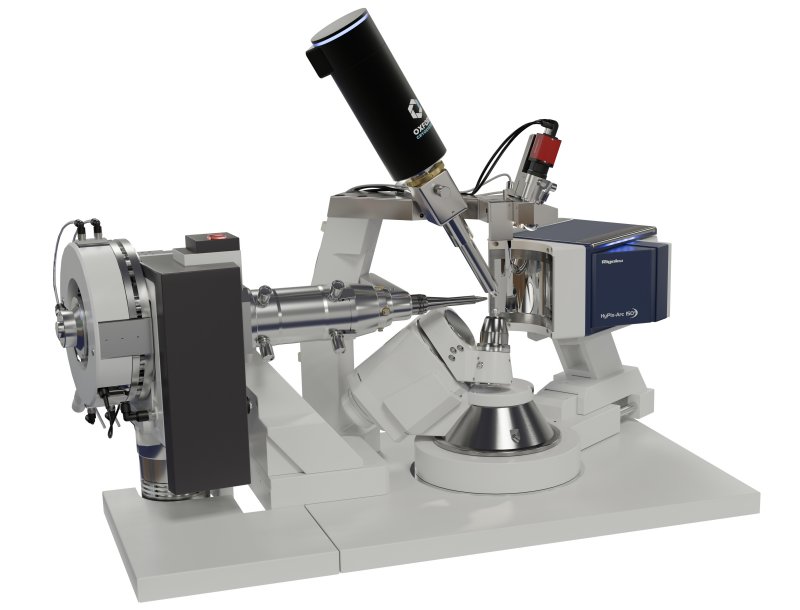


XtaLAB Synergy-DW Overview
XtaLAB Synergy-DW
The introduction in 2004 of the Oxford Diffraction Gemini diffractometer, with two independent X-ray sources, was a watershed moment in crystallographic instrumentation. The groundbreaking design of the Gemini suddenly gave crystallographers the ability to easily switch between Cu and Mo wavelengths and greatly expanded the experimental flexibility available for analyzing single crystal samples. The XtaLAB Synergy-DW is an evolution of that revolutionary idea which retains the flexibility of the dual wavelength capability but in addition adds the exceptional flux enhancement of a reliable, rotating anode X-ray source. It is the perfect diffractometer for a core facility where protein crystallography and small molecule crystallography are both practiced.
Configuration
The XtaLAB Synergy-DW diffractometer contains a PhotonJet-R X-ray source that is based on the proven, low-maintenance MicroMax-007 HF microfocus rotating anode X-ray generator. The target is constructed with two different X-ray source materials (the following combinations are available: Mo/Cu, Cu/Cr, Cu/Co, Cu/Ag, and Ag/Mo) and is coupled with an auto-switching dual-wavelength optic. Two wavelengths of X-ray radiation are available at the click of a button and switching between wavelengths takes only 5 minutes. Rounding out the XtaLAB Synergy-DW configuration is the fast and efficient four-circle kappa goniometer which is coupled with Rigaku’s Hybrid Photon Counting (HPC) X-ray detector, the HyPix-6000HE (or optionally the curved, large theta coverage detectors, HyPix-Arc 100° or HyPix-Arc 150°.) which has essentially no readout noise, no dark noise and high dynamic range. All of this controlled by the CrysAlisPro diffraction software package with sophisticated algorithms to tie the hardware together to minimize the time it takes to measure and solve single crystal X-ray structures.
The XtaLAB Synergy-DW now comes equipped with our new UG3 goniometer, which offers faster, more efficient data collections. For more information about the UG3, please see the overview page.
Proven reliability
The PhotonJet-R source was designed with reliability in mind. Clever Rigaku engineering makes filament changes easy, like swapping a printer cartridge, with no need to realign the source each time. Scheduled maintenance involves one annual visit from a Rigaku engineer, as with all XtaLAB Synergy diffractometers, and typically takes 1-2 days. With the anode exchange program, you get the benefit of rotating anode power with the convenience of sealed tubes.
Beam conditioning
Where overlapping peaks are a concern, e.g. large unit cells, proteins, twinned or incommensurate lattices, high beam divergence is undesirable. On PhotonJet sources, a software controlled, motorized variable beam slit is available as an option to alter divergence to adapt the source to your sample’s requirements. For those samples where intensity matters most, the slit can be fully opened giving the highest flux. For those where peak sharpness and overlap are factors, the beam can be limited to a divergence anywhere between 1 to 10 mrad.
CrysAlisPro
The XtaLAB Synergy-DW comes complete with CrysAlisPro, our user-inspired data collection and data processing software for single crystal analysis. Designed around an easy-to-use graphical user interface, CrysAlisPro can be operated under fully automatic, semi-automatic or manual control. CrysAlisPro combines automated crystal screening, the fastest and most accurate strategy software available, concurrent data reduction and automatic small molecule structure solution. CrysAlisPro can operate either in a protein or small molecule dedicated workflow. Popular third-party protein data processing packages can easily process diffraction data if desired. Visual feedback is provided for each step with clear, color-coded guidance so that both novices and experts can collect high-quality data in the shortest time possible.
AutoChem
AutoChem is the ultimate productivity tool for small molecule chemists, offering fast, fully automatic structure solution and refinement during data collection. Developed in collaboration with OlexSys Ltd (Durham University, UK), AutoChem works in conjunction with Olex² where more advanced structure solution and refinement functionality exists. AutoChem is seamlessly integrated within CrysAlisPro, and forms an integral part of our ‘What is this?’ feature. The ‘What is this?’ feature gives you structures quickly and ensures you are not wasting time collecting full datasets on known samples or starting materials. It is an alternative pre-experiment option, which is used to plan your full data collections.
XtaLAB Synergy-DW Features
XtaLAB Synergy-DW Videos
XtaLAB Synergy-DW Specifications
| Core attributes | Dual-wavelength rotating anode X-ray source diffractometer with hybrid pixel array detector and kappa goniometer | |
|---|---|---|
| Detectors | HyPix-6000HE or optionally the large theta coverage detectors HyPix-Arc 100° or HyPix-Arc 150° | |
| X-ray source | PhotonJet-R X-ray source with a target that is constructed with two different X-ray source materials (the following combinations are available: Mo/Cu, Cu/Cr, Cu/Co, Cu/Ag, and Ag/Mo; only Mo and Cu optics are available with VHF style optics) and is coupled with an auto-switching dual-wavelength optic | |
| Goniometer | Fast kappa geometry goniometer that allows data collection scan speeds of up to 10°/sec | |
| Accessories | Oxford Cryostream 1000, Oxford Cobra, XtaLAB Flow robotic system, XtalCheck-S, High Pressure Kit | |
| Computer | External PC, MS Windows OS | |
| Dimensions | 1300 (W) x 1875 (H) x 850 (D) (mm) | |
| Mass | 600 kg (core unit) | |
| Power requirements | 1Ø, 200-230 V, 20 A | |
XtaLAB Synergy-DW Options
The following accessories are available for this product:
High Pressure Kit
Accommodating the vast majority of commercially available and custom high pressure cells, the high pressure kit creates a sample space with an 8 cm diameter.
HyPix-Arc 100°
A curved single crystal X-ray diffraction detector based on direct X-ray detection technology with a higher 2θ range compared to a flat detector.
HyPix-Arc 150°
An optional, unique curved Hybrid Photon Counting (HPC) X-ray detector for single crystal diffraction applications.
Intelligent Goniometer Head 2 (IGH2)
The smallest detachable motorized goniometer head on the market.
Intelligent Optics Module (iOM)
A fully automatic optic alignment system. Achieve peak source performance any time with Intelligent Optics Module (iOM) automated alignment. To learn more, visit the product page.
Oxford Cobra
Offers the ultimate solution for both macromolecular and small molecule crystallography.
XtalCheck-S
With this system, one can easily survey many crystallization experiments by eliminating the need to harvest and cryo-cool samples.
XtaLAB Synergy-DW Application Notes
The following application notes are relevant to this product
-
B-SCX1011 - High-Speed Measurement Of A Peptide Drug Using HyPix-Arc 150°
-
SMX039 - The Absolute Structure of Light-atom-containing Molecules
-
PX026 - Sulfur SAD Phasing of Thaumatin in 10 Minutes with the HyPix-Arc 150° and XtaLAB Synergy-DW
-
SMX038 - Rigaku Rotating Anodes: Powerful and Reliable Sources for Seamless and High-throughput Small Molecule Structure Solution
-
SMX036 - Comparison of Two XtaLAB Synergy Instruments
-
SMX024 - Charge-density Data Collection on XtaLAB Synergy Diffractometers
XtaLAB Synergy-DW Resources
Webinars
| High-throughput Soaking Condition Screening for Crystalline Sponges | Watch the Recording |
Rigaku Journal articles
| Read the Article | |
| Read the Article | |
| Read the Article |
Publications
Visit the Publication Library to access articles relevant to XtaLAB Synergy-DW VHF
Forums
XtaLAB Synergy-DW Events
Learn more about our products at these events
-
EventDatesLocationEvent website
-
Rigaku School for Practical CrystallographyJanuary 26 2026 - February 6 2026
-
34th Annual Meeting of the German Crystallographic Society (DGK)February 25 2026 - February 28 2026Lübeck, Germany
-
Pittcon 2026March 9 2026 - March 11 2026San Antonio, TX, USA
-
BCA Spring Meeting 2026March 30 2026 - April 1 2026Leeds, United Kingdom
-
27th Congress and General Assembly of the IUCrAugust 11 2026 - August 18 2026Calgary, Alberta, Canada
XtaLAB Synergy-DW
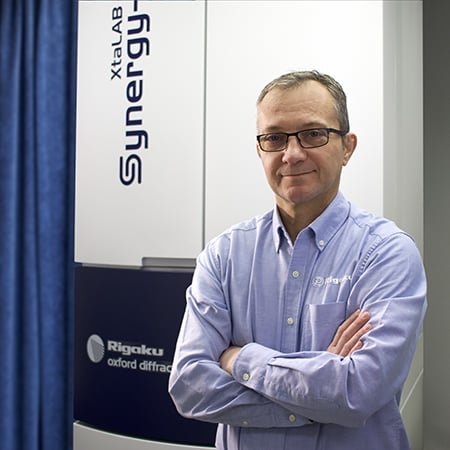
Contact Us
Whether you're interested in getting a quote, want a demo, need technical support, or simply have a question, we're here to help.

/Intelligent%20Goniometer%20Head%20v3.png)
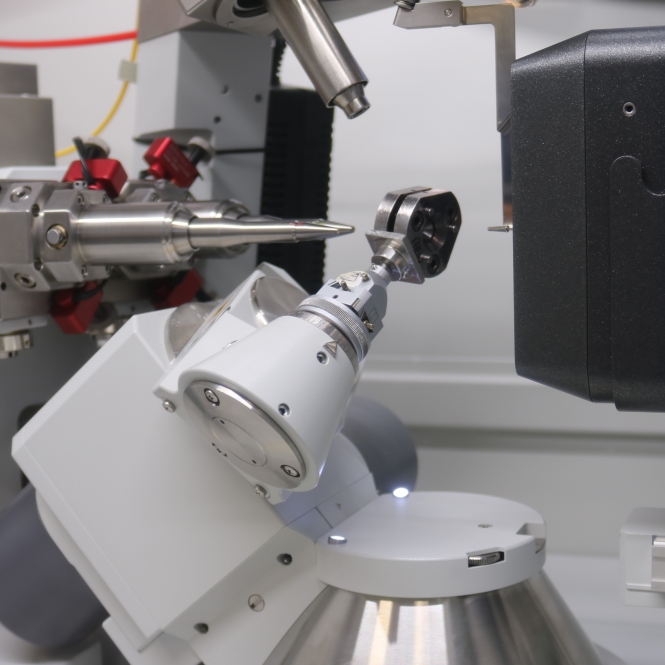
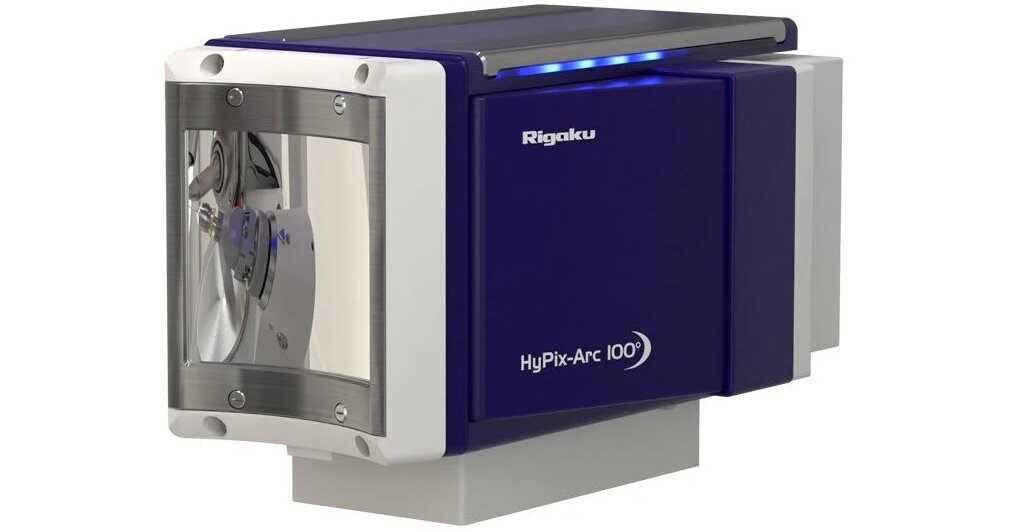
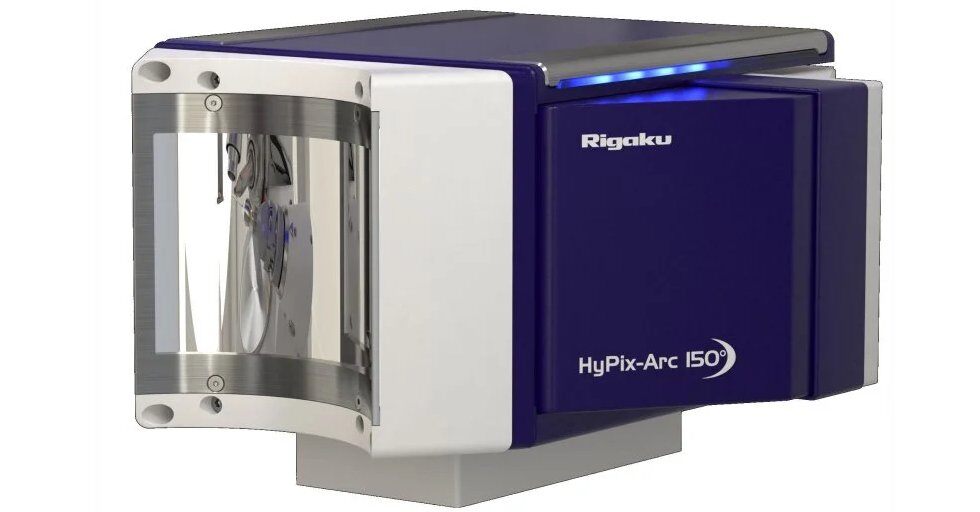
/INTELLIGENT%20GONIOMETER%20HEAD%20(IGH).jpg)
